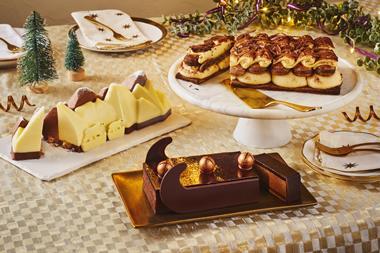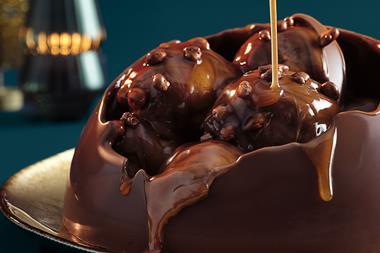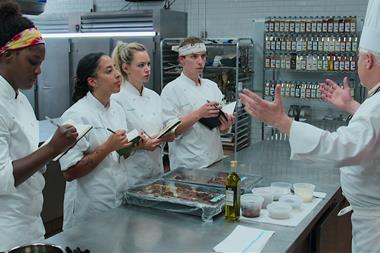The Grinch may not have stolen Christmas, but Italian sweet bakes definitely did.
Panettone has become a strong favourite in recent years: stocked by all major supermarkets, it dominated shelves and for some retailers it even outranked British festive classics such as mince pies and Christmas pudding in 2023.
Filled with chocolate, pistachio, sultanas, raspberries or cream, and now mixed with hot cross buns in Waitrose’s Easter range, there is no doubt panettone has won consumers’ hearts in all its forms. But will its Easter counterpart prove to be as challenging to the humble hot cross bun as panettone is to mince pies and Christmas pudding?
Colomba, the traditional Italian bread-cake, has come to Waitrose, M&S, Lidl and Sainsbury’s for Easter. But what is it, and is really any different from panettone?
How does panettone differ from colomba?
The traditional Italian bake is usually made on Good Friday and eaten during the Easter period. Similar to panettone, it is a sweet bread leavened with fresh yeast, filled with candied fruit and often infused with orange peel to enrich the dough.
Colomba’s conception began, like panettone, at Christmas. According to legend, a Milan bakery famous for its panettone and pandoro – another festive Italian sweet bread – dreamt up colomba as a way to commercialise Easter using the same ingredients and equipment it did for panettone at Christmas. Yet, the crafty bakery gave it a new shape (that of a ‘colomba’, Italian for dove) to ensure enough differentiation from panettone.
But the similarities end there. While panettone has both sultanas and mixed candied fruit inside, the Easter treat is filled only with candied orange peel.
The Christmas bake has also shown more adaptability, with countless variations being produced from white chocolate filling to pistachio and hazelnut cream. So far, colomba has remained true to its traditional recipe.
Easter food trends 2024
But what makes colomba truly special is its classic ‘nocciolata’: the sugary mix with almond and sugar pearls that outlines the shape of a dove’s wings and gives the bake an uneven crispy coating, pleasant to both eye and ears when you slice into it.
The jury’s out on whether colomba will become a new festive phenomenon. Though a few retailers have already stocked their shelves, the availability of only the traditional type and the very short seasonal period are a challenge.
However, the new bake sure has caught the attention of British consumers, with supermarket ranges reflecting more widely a growing taste for global festive bakes.
We will see if 2024 is the year for colomba to spread its wings, and carry its delicious and much-needed message of peace to tables across the UK.
























No comments yet